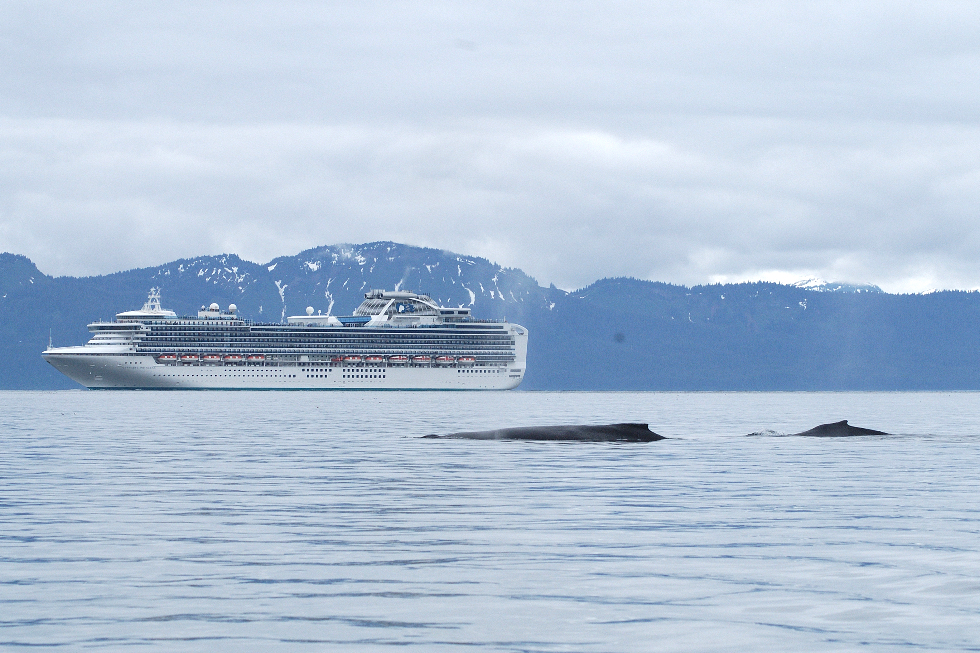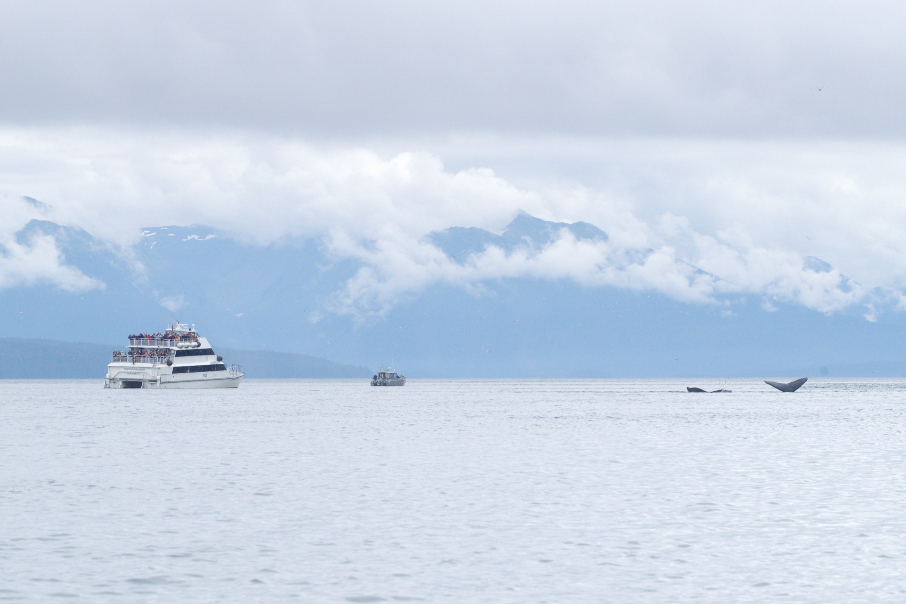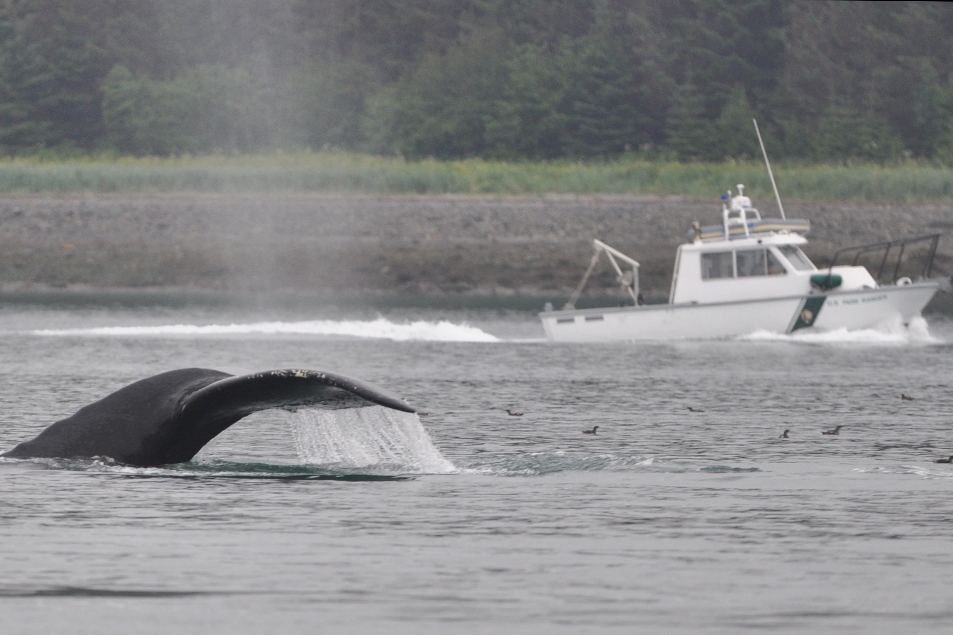Cruise ships and smaller tour vessels carry the vast majority of visitors into Glacier Bay National Park. Underwater noise from vessels and other sources can affect humpback whales and other marine life by decreasing the distance over which they can communicate and detect predators and prey. To protect the underwater sound environment, Park managers must do their best to understand the effects of these vessels when making management decisions.

We used a software package called Using the Acoustic Integration Model (AIM ©) to simulate whale and vessel movement in Glacier Bay National Park (GBNP) to estimate the maximum and cumulative levels of cruise ship and tour vessel noise, as well as the amount of quiet time, that whales in the park would experience under different management scenarios.

First, we distributed 1201 simulated humpback “whales” throughout Glacier Bay in areas where they are known to frequent. These “whale animats” were programmed to behave like real humpbacks (dive times, dive depths, swim speeds, etc.). Then we added a track for each cruise ship or tour vessel (see video here). Using existing knowledge about how loud each vessel is and how sound travels in the Bay, AIM created a “sound footprint” for each vessel as it traveled through the Bay past each “whale”. AIM then estimated the received sound level for each “whale” every 15 seconds for the entire day. In each simulation, we varied the number, speed (13 knots =”slow” vs. 20 knots=”fast”), and timing of cruise ships while keeping the number, speed, and timing of smaller tour vessels the same. One of the measures that AIM produced was the cumulative sound exposure, or CSEL, which represents the total amount of noise that a whale is exposed to over the entire day.

A key finding from this study was that cruise ship speed was the dominant factor affecting how much noise “whales” were exposed to in Glacier Bay. In fact, the median CSEL values from two “slow” ships were lower than from just one “fast” ship. On days with fewer and/or slower cruise ships, the noise from the three daily tour vessels, which are much smaller than cruise ships, was more important to the Bay’s total underwater soundscape.
Another practical and important finding was that even though slower cruise ships produce longer exposure times (that is to say, they pass by more slowly), they produce much lower CSEL than faster cruise ships. The difference was substantial: The “whales” in simulations with cruise ships traveling at 13 knots were exposed to CSELs that were 3 times lower than when ships traveled at 20 knots. Even in cases where the ship was only a few decibels quieter at a slower speed, CSELs were lower, even though the ship’s transit past the “whale” takes much longer.

Synchronizing cruise ship arrival times had little effect on CSEL but did decrease the cumulative amount of time that the “whale” was exposed to ship noise. It also created quiet periods of time that may benefit whale communication or behavior. However, managers must take into account the noise from other types of vessels using the Bay, which are smaller but more numerous (including charter boats, private yachts, skiffs, and Park Service vessels). These other vessel classes are likely to create underwater noise during planned cruise ship “quiet periods”, albeit at much lower levels than cruise ships produce.
Creating opportunities for visitors to enjoy Glacier Bay is an important part of the National Park Service’s mission, and the cruise and tour companies that are authorized to bring visitors into Glacier Bay play an important role in meeting that mission. The work summarized here was made possible by the cooperation of tour vessels and cruise ships who voluntarily allowed Park scientists, in cooperation with acousticians with the US Navy, to measure the underwater noise produced by each vessel at different speeds. Model results like these are an important first step toward understanding the acoustic effects of management decisions and protecting Park resources while allowing visitors to enjoy the Park.
Overall, these results suggest that the most effective way to reduce humpback whale exposure to underwater noise from cruise and tour vessels in GBNP is to reduce cruise ship speed or numbers, although adjusting ship schedules may also be beneficial by allowing longer relatively quiet intervals between ship noise events. You can read the full article in Endangered Species Research here: http://www.int-res.com/abstracts/esr/v34/p397-415/
All photos used here were taken by NPS whale biologists under the authority of scientific research permits issued by the National Marine Fisheries Service.
